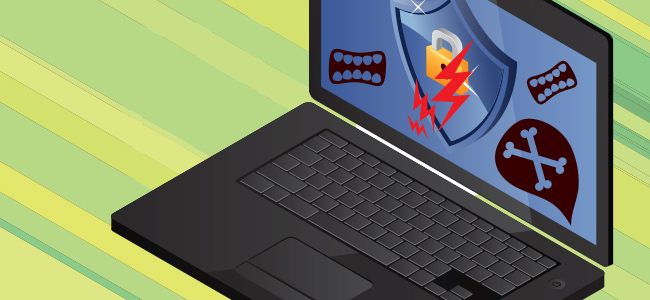Online attacks on big brand businesses have become a norm in the news headlines in the recent years. If we look at statistics, 1 out of 5 small businesses in the US fall prey to cybercrime each year and a majority of them are forced to fold up their business and move on.

The intent of the attack ranges from large-scale profits, digital hacktivism, to just petty personal gratification. It’s practically impossible for online businesses to discover why the perpetrators are attacking their websites or make peace with them. What they can do instead is to strengthen their network capabilities to protect their digital assets against network attacks with virus scans and virus removal. Just like comedian-turned-politician Al Franken once said, “It’s easier to put on slippers than to carpet the whole world.”
So how do you put a rock-solid network protection in place? Here are some pointers:
1. Create a Network Security Policy
A clear, fool-proof, and comprehensive network policy works as a security compass for a business organization. Such network policies are written documents that outline user policies about who can access the network, what limitations and privileges do they have, and so on.
The policy essentially revolves around identifying important data assets, carrying out risk assessment tests, and creating a disaster recovery plan. Usually, corporations organize drills to see if the policy implementation has been received well by the employees, if they need further training, or if the policy has loopholes that needs fixing.
2. Adopt a Strong Password Policy
A weak password is a death wish for corporate networks, while good passwords go a long way to keep them out of harm’s way. We have all heard of hackers deploying simple softwares to breach a user account, so it’s outlandish to create passwords based on your memory’s convenience. Network admins should enforce device owners to create passwords that are complex in nature and not something that’s picked out of dictionary. It’s also a healthy practice to make passwords expire every 60 or 90 days so that the password complexity reshuffles and remains complicated.
3. Keep the Network Up-To-Date
After securing your network access points through strong passwords, you should dig deeper to make your network infallible against any hazardous attacks. One of the ways cybercriminals find loopholes to launch their attacks is through old versions of softwares. So consider updating the Operating System, antivirus, firmware, device drivers and other softwares in all endpoint devices.
Once you have them updated successfully, make sure you review and change the default security settings to match your network policy, and also create strong passwords.
4. Strengthen the Human Link
Hackers know that users are the weakest link in any network, and that is how phishers are able to employ social engineering to attain their goals. Besides online attacks, threats can originate from physical sources too, such as a vengeful employee. Setting up network privileges becomes really important for this reason. Besides, educating your staff pool about the importance of general cybersecurity and the value of data privacy is a good starting point to involve everyone that counts.
Most employees are not aware of the dangers involved in network security, so spreading the word through posters, emails, and workshops is of paramount importance.
5: Block Users from Installing Software
This might come across as a crass advice, but it’s really an important rule to consider for businesses that don’t want to lose their valuable data to some willy-nilly attacks. Almost all enterprises have IT departments, so when an individual or a team needs to download something that contributes to their work flow, the IT team can facilitate the installation through their admin credentials.
On a flip side, many corporations suffer from malware attacks and data loss because not all employees who are given the download privileges are well-versed in distinguishing safe websites from malicious. For a rule that is so simple, the results are really remarkable and worth implementing.
6. Install a Trustworthy Firewall
Like a security guard true to his salt, a firewall application will keep an eye for all the unauthorised processes and block them while letting the safe ones access your network. Firewalls can be configured both for your softwares as well as hardwares, and they mitigate the chances of hazardous files entering your network.
From monitoring the web traffic to blocking Trojan horses, thwarting hacking attempts, and fighting keyloggers, a trustworthy personal firewall application will police your network based on the security policies you’ve laid out.
Difference Between Malware and Virus
Get the best Web Security for your enterprise
Related Resources
DDoS Attack Forces Wikipedia Offline
Mac Virus Removal
Website Security Check




